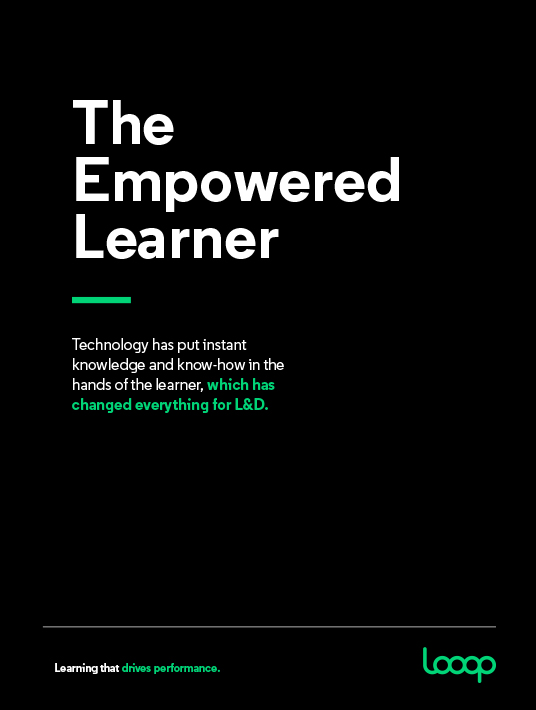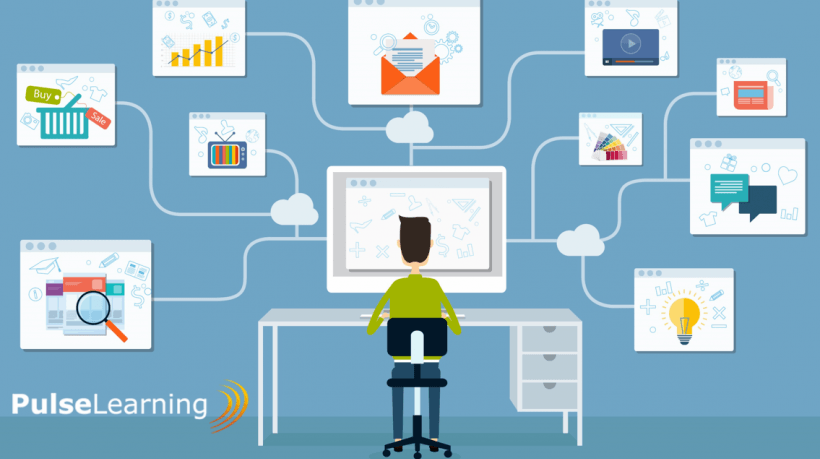From Courses To Resources: How To Reach Empowered Learners
Famously, Einstein reached for a directory when asked for his telephone number. “You don't remember your own number?”, he was asked. “No”, Einstein answered. “Why should I memorize something I can so easily get from a book?”
- Knowledge workers used to retain most of what they needed for their job.
In 1986, knowledge workers retained 75% of what they needed to know for their job. - Knowledge workers now only retain up to 10% of what they need to know.
By 2006, knowledge workers were retaining only between 8-10% of the knowledge they needed to do their jobs.

If knowledge workers only retain 8-10% of what they need to know to do their jobs (down from 75% in 1986), how well-equipped are they to find the other 90% when they need it in your organization? [1]
To be clear, this isn’t about retaining information after a training session. This is not knowing 90% of what they need for their jobs – in totality.
It’s easy to see why employees and organizations benefit from easy access to the right resources at the right time. This approach immediately makes learning more relevant, personalized, and effective. Learners are encouraged to learn when they need to learn, rather than for a future or past need.
Custom-Made Resources – Tapping Into Expertise
The internet and social media has given us all access to experts, their work, and their thinking: directly and in real-time. We also know that the empowered learner values knowledge-sharing and team collaboration over any other forms of learning. The key to making this work in organizations is making knowledge-sharing—and access to knowledge and know-how—as easy as it is online, outside of the corporate infrastructure.
With 84% employees potentially willing to use technology to share what they know with their peers[2], companies are increasingly unleashing the power of their own experts.
- Googler-to-Googler.
Google’s Googler-to-Googler program is one good example of how companies promote a learning culture. Karen May, Google’s Head of People Operations, says that giving employees teaching roles makes learning a natural part of the way employees work together, rather than something HR makes them do.[3] - Disney Digital Lab.
Disney brought together internal digital experts to raise the level of digital awareness in order to capitalize on emerging digital trends. L&D played a facilitation role, whilst the digital expertise that resided in Marketing, Online, IT, and Digital Media Distribution co-owned the design and delivery.[4] - Learning like YouTube.
A Telecommunications company in the US capitalized on the field expertise of their engineers by having them record themselves, with smartphones, repairing customer boxes (many of them obsolete). These recordings were then uploaded onto a platform that allowed other engineers to search and find these tutorials as they would on YouTube.[5]
Learning Online, On-Demand, And On-The-Go To Directly Aid Performance
In any organization there are examples of high performance and productive work practices that many other employees would benefit from accessing. The opportunity for L&D is to create systems of learning where the knowledge and expertise that already resides within is available online – at moments of need. This capitalizes on the habits, preferences, and motivations of the empowered learner who wishes to pull resources online but, unlike a web-search, internal resources can provide context that’s relevant to their organization.
The key here is to not think in terms of providing learning, but in terms of aiding performance. An example of where we accept this is in driving cars, where navigation was passed to a system, of first maps and more recently to SatNav, which “does not aid learning – it aids performance. It does so by reducing our need to learn—by externalizing learning—by handing the learning process to a system”.[6]

3 Steps Forward To Reaching The Empowered Learner
Employees want to learn from their colleagues and have fast, easy access to relevant information and know-how. People want to—and currently do—learn online and if this isn’t happening in their organizations, then it’s time to question the platforms and content instead of learner motivations. L&D needs to facilitate this and support employees in the workflow, helping to reduce the time between learners not-knowing something and then knowing it, whilst driving improved business performance through increased learner engagement.
Rather than perceiving this new learning environment as a threat or insurmountable challenge, L&D can embrace it and carve out its own role in the modern learning landscape. It’s quicker and easier to do so than is commonly believed:
- Knowledge-Sharing.
Knowledge-sharing and collaboration are the preferred and most effective development methods so find ways to harness this – on and offline. Empower and trust your sharers.
Think: Intuitive and time-friendly. - Performance Support.
Create and curate performance support that can be pulled at the learner’s moment of need, in a way that replicates how people do this successfully already online.
Think: Learner-first and in-the-workflow. - Modern Technology.
Find the right technology tools that your learners want to engage with and that will reach and support the 21st century employee – both today and for the future.
Think: Google and YouTube.
If you’re interested in learning more about how to reach today’s empowered learners, download the free eBook The Empowered Learner.
References:
- The New Knowledge Worker: Enabling the Next Generation, Bob Mosher, Chief Learning Officer, 22 June, 2007.
- Engaging Disengaged Learners, Laura Overton, Towards Maturity, 24 February, 2014.
- Global Human Capital Trends 2015: Leading in the new world of work (Page 27), Deloitte University Press, 2015.
- Hands up for learning, Rowena Bach, David James, Training Journal, 1 December, 2015.
- Interview with Josh Bersin, Principal, Bersin by Deloitte, Deloitte Consulting LLP, Firing Line. 26 May, 2015.
- Googling our way through life, Nick Shackleton-Jones, aconventional blog, 12 July, 2015.









